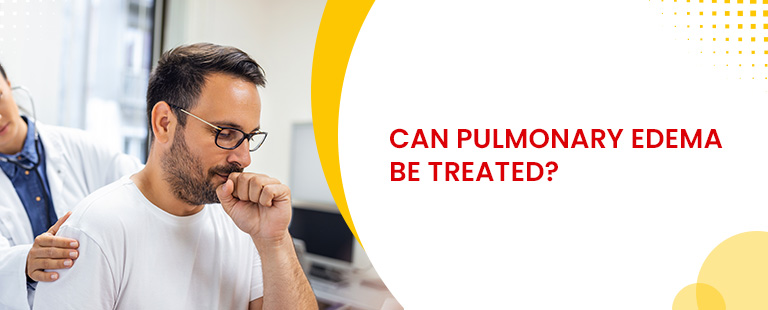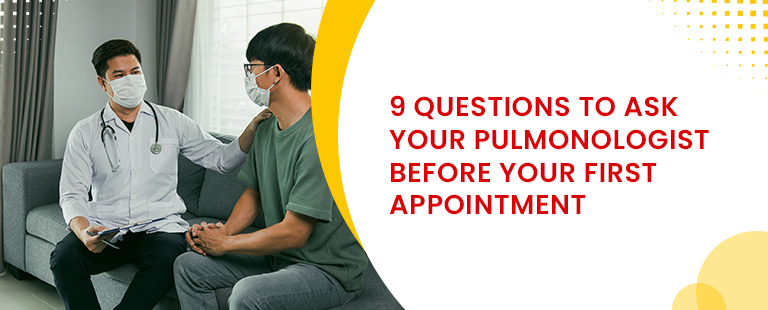What is pulmonary edema?
Pulmonary oedema is a medical condition that is treatable. It occurs when there is an excess buildup of fluid in the air sacs of the lungs.
This fluid buildup can make breathing difficult and cause symptoms such as coughing up foam or loose mucus, chest tightness, shortness of breath, and wheezing.
Pulmonary oedema can be caused by various factors such as heart problems, pneumonia, toxin exposure, medications, or chest trauma.
It is of two types: cardiogenic and noncardiogenic. A heart problem causes cardiogenic pulmonary oedema, while other factors cause non-cardiogenic pulmonary edema. Pulmonary edema can be acute or chronic and life-threatening, making immediate treatment necessary.
Diagnosis of pulmonary edema
Diagnosing pulmonary oedema typically involves a combination of physical examination, diagnostic tests, and imaging studies.
The following are some of the common diagnostic methods used to diagnose pulmonary edema:
- Physical examination: A healthcare provider will perform a physical examination to check for signs of fluid buildup in the lungs. This may include listening to the lungs with a stethoscope to detect abnormal sounds such as crackles or wheezes.
- Chest X-ray: A chest X-ray can help visualise the presence of fluid in the lungs, which can confirm a diagnosis of pulmonary oedema. It is one of the first tests ordered.
- Pulse oximetry: A small device clips onto a finger or earlobe and measures the amount of oxygen in the blood. This test can help determine if the lungs are effectively oxygenating the blood.
- B-type natriuretic peptide (BNP) blood test: A BNP blood test measures the hormone level produced in response to excess fluid buildup by the heart. It can help distinguish between cardiac and non-cardiac causes of pulmonary oedema.
- Chest computerised tomography (CT) scan: A chest CT scan is a series of X-ray images that creates a detailed picture of the lungs and can help identify the underlying cause of pulmonary edema.
- Arterial blood gas test: This test measures oxygen and carbon dioxide level in the blood and can help assess the severity of pulmonary oedema.
- Electrocardiogram: An electrocardiogram (ECG) is a test that records the heart’s electrical activity. This test can help diagnose any underlying heart problems causing pulmonary edema.
- Echocardiogram: It is an imaging test that uses ultrasound to create detailed images of the heart. It helps to identify any abnormalities in heart function contributing to pulmonary edema.
- Cardiac catheterisation: In this test, a thin, flexible tube is inserted into a blood vessel and threaded up to the heart. This test can help measure the pressure inside the heart and lungs, which can help diagnose pulmonary oedema.
- Complete Blood Count: A complete blood count (CBC) test is done to
identify any infections or other conditions contributing to pulmonary edema.
- Lungs Ultrasound: A lung ultrasound is non-invasive and creates lung images using high-frequency sound waves. It is used to identify the presence of fluid in the lungs.
A timely and appropriate diagnosis is crucial for effectively treating and managing this potentially life-threatening condition.
Can pulmonary edema be treated?
The treatment for pulmonary oedema is available and it depends on the underlying cause and the severity of the condition. The following are some common treatment options:
- Medications: Diuretics are commonly used to help remove excess fluid from the lungs and improve breathing. Inotropes are used to help improve heart function. Morphine may be given to reduce anxiety and improve breathing, and blood pressure drugs can be used to reduce the workload on the heart.
- Breathing Tube in the Trachea: In severe cases of pulmonary edema, a breathing tube may be inserted into the trachea that helps patients breathe more effectively.
- Oxygen Therapy: Oxygen therapy may be provided using a mask, nasal cannula, or positive pressure mask to help increase the amount of oxygen in the blood.
- Renal Replacement Therapy: In some cases, pulmonary edema may be caused by kidney failure. In such cases, renal replacement therapy, such as dialysis, may be necessary to remove excess fluid from the body.
- Continuous Positive Airway Pressure (CPAP): CPAP therapy involves using a machine that delivers a continuous flow of air pressure to the lungs through a mask. It helps reduce the amount of fluid in the lungs and improve breathing.
In addition to these treatments, addressing the underlying cause of pulmonary edema is important. This may involve treating an underlying heart condition, such as heart failure or arrhythmia, or addressing an infection or toxin exposure.
Prevention of pulmonary edema
Here are some preventative measures you can take to reduce your risk of developing pulmonary edema:
- Manage Blood Pressure: High blood pressure is one of the major risk factors for pulmonary edema. By managing your blood pressure, you can significantly reduce your risk. Lifestyle changes such as exercise, a healthy diet, and reducing stress can help manage blood pressure. Some may need medications.
- Manage Weight: Excess weight can strain the heart and lungs, increasing the risk of pulmonary edema. By maintaining a healthy weight, one can reduce your risk significantly. It can be done by eating a healthy, balanced diet and exercising regularly.
- Avoid Smoking: Smoking cigarettes poses a great risk for pulmonary edema. Quitting smoking improves overall health, and it can significantly help to prevent the development of this condition.
- Consume Less Salt: High salt intake can lead to fluid retention and increased blood pressure, increasing the risk of pulmonary oedema. Reducing your salt intake can help prevent this condition. Try to limit processed and packaged foods and add more fresh fruits and vegetables to your diet.
- Regulate Cholesterol Levels: High cholesterol can increase the risk of heart disease and other conditions leading to fluid buildup in the lungs, increasing the risk of pulmonary edema. By regulating your cholesterol levels, you can reduce your risk.
These preventative measures can significantly reduce the risk of developing pulmonary edema and improve overall health.
Conclusion
Pulmonary edema can be a serious and life-threatening condition but treatable. The treatment options depend on the underlying cause and severity of the condition.
The main goal of treatment is to remove the excess fluid from the lungs and improve breathing. Oxygen therapy, medications to reduce fluid buildup and improve heart function, and mechanical ventilation or surgery are some of the available treatment options in severe cases.
It is important to seek medical attention if you experience symptoms of pulmonary oedema, as early intervention can improve outcomes and prevent complications. With proper treatment and management, many people with pulmonary oedema can lead full and healthy lives.




